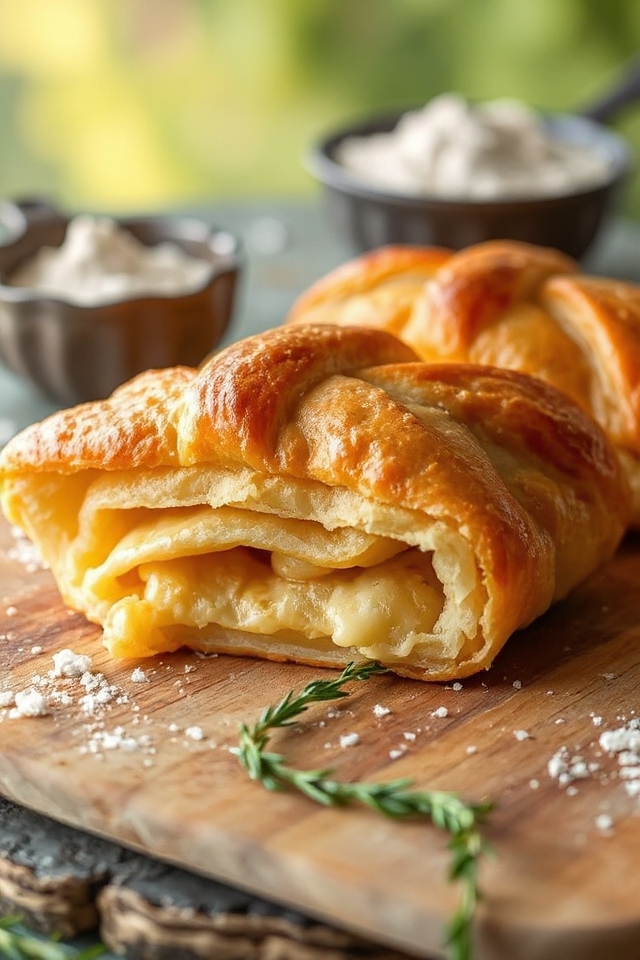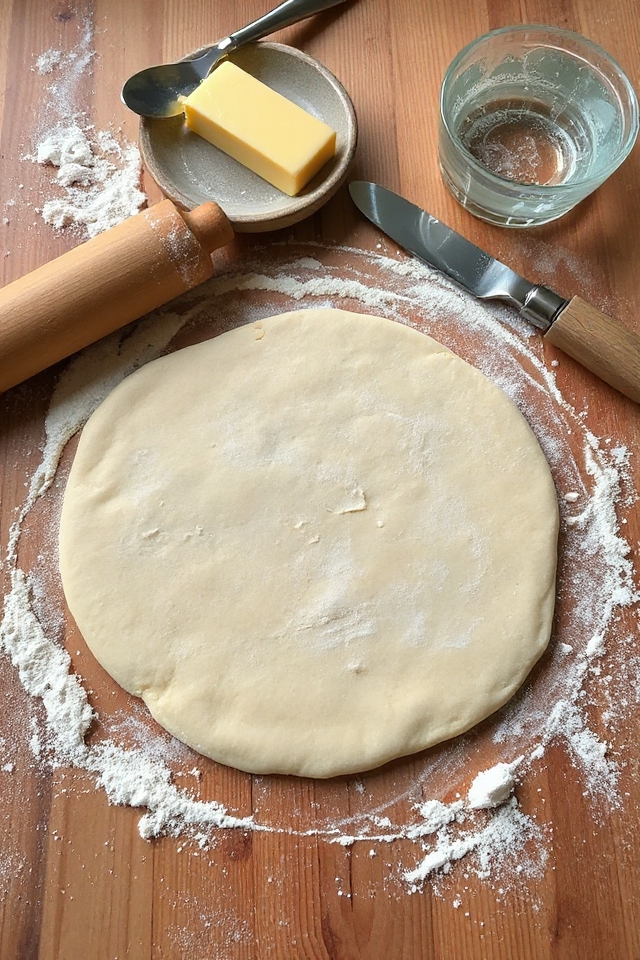Why You’ll Love This Gluten Free Pastry Recipe
If you’re looking for a pastry recipe that’s both delicious and gluten-free, you’re in for a treat.
I’ve made this pastry countless times, and it never fails to impress. The texture is light and flaky, making it perfect for sweet or savory dishes.
What I love most is how easy it’s to whip up; in just a few simple steps, you’ve got a versatile dough ready to roll.
Plus, it’s a great way to cater to friends or family with gluten sensitivities. Trust me, once you try it, you’ll never want to go back to regular pastry!
Ingredients of Gluten Free Pastry
Let’s explore the delicious world of gluten-free pastry! If you’ve been longing for a flaky, buttery crust but have been sidelined by gluten sensitivities, you’re in luck. This recipe isn’t only simple but also uses ingredients that you probably have in your kitchen already.
Plus, who doesn’t love a good excuse to whip up something tasty? Whether you’re planning to fill it with sweet fruits, or savory veggies, this pastry is the perfect base. So, let’s get started with what you’ll need.
Ingredients for Gluten Free Pastry
- 100 g gluten-free flour
- 50 g butter or margarine
- 2 tablespoons water
Now that we’ve our ingredients ready, let’s chat a bit about them. First off, using gluten-free flour is essential, but there are so many options out there.
You can choose from rice flour, almond flour, or a pre-made gluten-free blend. Each type has its own quirks, so don’t be afraid to experiment a little. If you’re dairy-free, margarine works just fine, but if you love that rich buttery flavor, go for the real deal!
And about the water, don’t fret if you need to adjust the amount slightly; you want just enough to bring the dough together without it becoming sticky. It’s all about finding that perfect balance.
How to Make Gluten Free Pastry

Alright, let’s explore the delightful process of making gluten-free pastry! It’s easier than you might think, and trust me, your taste buds will thank you for the effort. So, grab your 100 g of gluten-free flour and let’s get rolling—well, sort of.
First things first, take that gluten-free flour and put it in a mixing bowl. Now, you want to add 50 g of butter or margarine to the flour. Here’s where it gets a little messy but in a good way. Using a pastry cutter or a knife, start blending the butter into the flour. You want to keep mixing until it resembles breadcrumbs.
If you’re anything like me, you might find yourself covered in flour by this point, and that’s perfectly fine. It’s a badge of honor for bakers everywhere. Just think of it as a floury fashion statement.
Once you’ve achieved that breadcrumb-like consistency, it’s time to add 2 tablespoons of water. Now, don’t just dump it all in at once. Add a little at a time and start bringing the mixture together into a soft ball of dough. If it feels a bit too dry, you can sneak in a little more water, but be careful not to overdo it; we’re not trying to create a gluten-free soup here.
Once you’ve got your dough ball, wrap it in cling film and let it rest for about 30 to 60 minutes. This resting period is essential—it allows the flavors to meld and the dough to relax, making it easier to roll out later.
After your dough has taken a little time out, it’s time to roll it out. Flour your surface lightly and use a rolling pin, also dusted with flour, to gently roll the dough to your desired thickness.
I find it’s best to keep things modest—too thick and it won’t cook through, too thin and it might tear like my resolve when a chocolate cake is around. Once rolled out, you can proceed with your recipe, whether it’s pie, tart, or whatever you fancy.
And voilà! You’ve just made gluten-free pastry. Easy peasy, right? Now, let’s see what fun substitutions and variations we can come up with next.
Gluten Free Pastry Substitutions & Variations
While experimenting with gluten-free pastry, I’ve discovered a world of substitutions and variations that can elevate your baking game.
For the flour, I love using a blend of almond flour and coconut flour for a nutty flavor. If you prefer a lighter texture, try adding some arrowroot or tapioca starch.
Instead of butter, I often substitute coconut oil or vegan margarine, which works beautifully. You can even add spices or zest to infuse unique flavors.
Feeling adventurous? Swap in different sweeteners like honey or maple syrup to create delightful desserts. The possibilities are endless, making gluten-free baking exciting and delicious!
Additional Tips & Notes
When I make gluten-free pastry, I always keep a few key tips in mind to guarantee the best results. First, I use a quality gluten-free flour blend, as it can greatly affect texture.
I also chill my butter or margarine before blending; it makes for a flakier crust. Don’t skip the resting time—letting the dough sit is essential for better handling.
When rolling out, I find a lightly floured surface and rolling pin prevent sticking. Finally, if the dough feels too crumbly, I add a splash more water.
These little tweaks make a world of difference in my pastries!
